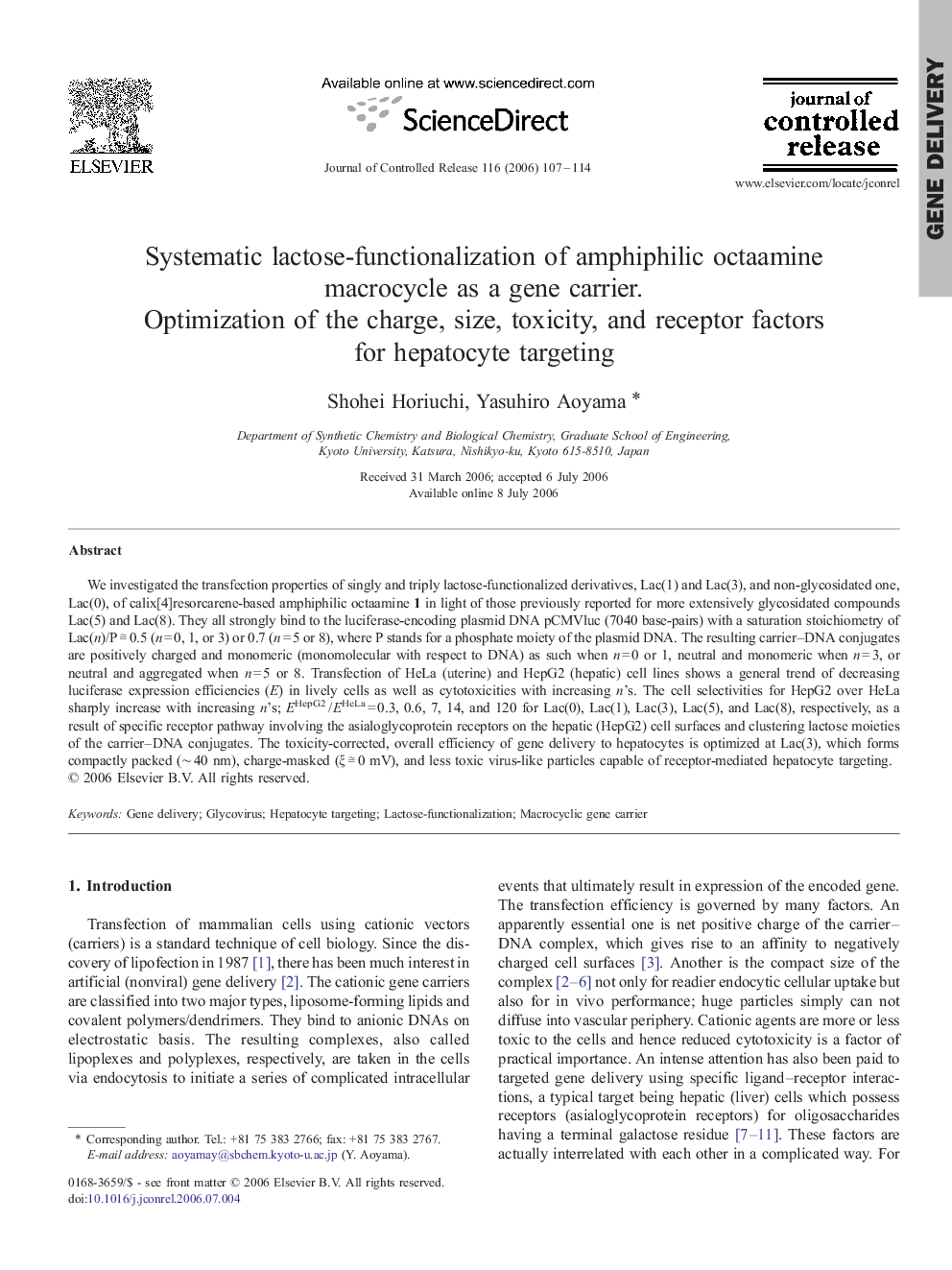| Article ID | Journal | Published Year | Pages | File Type |
|---|---|---|---|---|
| 1427431 | Journal of Controlled Release | 2006 | 8 Pages |
Abstract
We investigated the transfection properties of singly and triply lactose-functionalized derivatives, Lac(1) and Lac(3), and non-glycosidated one, Lac(0), of calix[4]resorcarene-based amphiphilic octaamine 1 in light of those previously reported for more extensively glycosidated compounds Lac(5) and Lac(8). They all strongly bind to the luciferase-encoding plasmid DNA pCMVluc (7040 base-pairs) with a saturation stoichiometry of Lac(n)/PÂ â
 0.5 (n = 0, 1, or 3) or 0.7 (n = 5 or 8), where P stands for a phosphate moiety of the plasmid DNA. The resulting carrier-DNA conjugates are positively charged and monomeric (monomolecular with respect to DNA) as such when n = 0 or 1, neutral and monomeric when n = 3, or neutral and aggregated when n = 5 or 8. Transfection of HeLa (uterine) and HepG2 (hepatic) cell lines shows a general trend of decreasing luciferase expression efficiencies (E) in lively cells as well as cytotoxicities with increasing n's. The cell selectivities for HepG2 over HeLa sharply increase with increasing n's; EHepG2 / EHeLa = 0.3, 0.6, 7, 14, and 120 for Lac(0), Lac(1), Lac(3), Lac(5), and Lac(8), respectively, as a result of specific receptor pathway involving the asialoglycoprotein receptors on the hepatic (HepG2) cell surfaces and clustering lactose moieties of the carrier-DNA conjugates. The toxicity-corrected, overall efficiency of gene delivery to hepatocytes is optimized at Lac(3), which forms compactly packed (â¼Â 40 nm), charge-masked (ξ â
 0 mV), and less toxic virus-like particles capable of receptor-mediated hepatocyte targeting.
Keywords
Related Topics
Physical Sciences and Engineering
Materials Science
Biomaterials
Authors
Shohei Horiuchi, Yasuhiro Aoyama,
